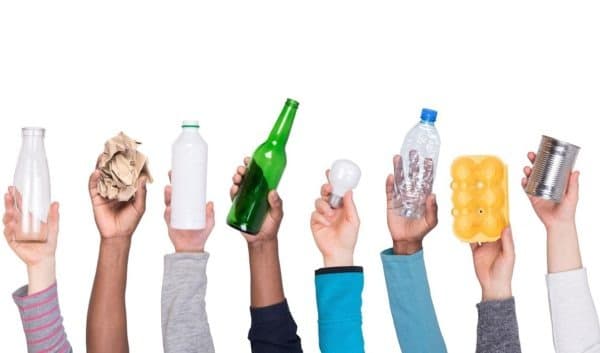We’ve all made mistakes when sorting the recyclables from the trash, and the processing plants are the ones that pay for it. When the wrong materials aren’t properly sorted, they lose time and money to correct the problem or fix the machinery. No one is perfect but we can all get better, keep reading and you’ll recycle like a pro in no time.
- Batteries: corrosive ingredients make for toxic and fire hazard hazards
- Bowling balls: there are reports from recycling centers of people bringing these in, at least once a week or once a month, but they can’t be recycled
- Ceramics and pottery: baked clay can’t be broken down and remold into anything, nor can the glazes used to make them waterproof

- Christmas lights, electrical cords, headphones, hoses, and chains: thin, flexible items tangle in machinery easily, which is their nickname in the trade
- Diapers: never put toilet waste in anything but the toilet or trash, diapers are not recyclable because of the contamination and multi-materials they use. New diapers cannot be recycled either
- Electronics: these are televisions, phones, computers, appliances, vacuums, things like that. Electronics are separate recycling stream items, they contain special elements and materials
- Food and food-soiled items: anything greasy, oily. slimy or otherwise dirty should be thrown away. No food can be recycled and it should never be put in a recycling bin
- Glass that’s not a food container, like a jelly jar or wine bottle: window glass and similar panes will not process correctly because they are made to withstand higher temperatures and be more durable

- Hangers (both metal and plastic): these get tangled in machinery and cannot be accepted
- Hazardous material containers and packaging (even emptied): anything flammable, corrosive or toxic. These could be paint, fuel, poison, or medical waste, they can cause harm to humans, wildlife, plant life, and water systems
- Laminated, colored, and dyed papers: heat treatment and the rich pigments contaminate clean paper, and the lamination can’t be separated
- Light bulbs: these are a separate recycling stream and can’t go in the everyday recycling bin
- Multi-layer bags and packaging: these could be potato chip bags, baby food containers or the wrappers from granola bars or candy. They are made from many layers of materials that can’t be processed. The rule of thumb is: if it’s flexible enough to ball up in your hand, toss it

- Pizza boxes: although made of paper, saturated grease and oil turn these into a waste of trees. You can help change this by signing our petition, it addresses the 5 biggest pizza restaurants and challenges them to fix this, find it HERE, #blanketthebox
- Plastic clamshells: these are the containers that berries come in, and they’re too thin to process
- Plastic shopping bags and plastic wraps: super-thin materials like these get wrapped around the machinery, slowing and even stopping the processing until someone removes them
- Shredded paper: this is difficult to sort and too often makes a mess
- Single-use paper products (napkins, paper towels, and toilet paper): those are contaminated after use
- Styrofoam: although it’s everywhere, it is not recyclable, nor is it biodegradable
- Wood: disappointing, but wood is not recyclable by the processing facilities. Don’t throw it away though, you can always find another use or someone to take it off your hands
Each location is different, and this list is not complete, though we hope it sheds light on the common items we make mistakes with. Share this with your friends and family, with a little diligence, we can all recycle correctly without even thinking about it. Green is the new black #ginb


